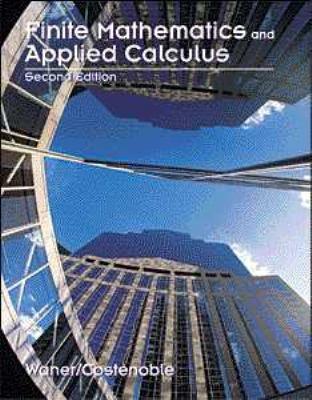Question
I have attempted these questions but still have been getting them wrong. I understand most of them are P(A and B) but when breaking them
I have attempted these questions but still have been getting them wrong. I understand most of them are P(A and B) but when breaking them down I get it wrong. I used YOUTUBE and other sites and still can't figure it out. Any help would greatly be appreciated. Thank you.
The table summarizes results from 976 pedestrian deaths that were caused by automobile accidents.
| Pedestrian Deaths | |||
| Driver Intoxicated? | Pedestrian Intoxicated? | ||
| Yes | No | ||
| Yes | 53 | 82 | |
| No | 266 | 575 |
If one of the pedestrian deaths is randomly selected, find the probability that the pedestrian was not intoxicated or the driver was intoxicated.Please enter a decimal to 4 decimal places. Probability =
A store manager gathers some demographic information from the store's customers. The following chart summarizes the age-related information they collected:
| Age | Number of Customers |
|---|---|
| <20<20 | 65 |
| 20-29 | 83 |
| 30-39 | 99 |
| 40-49 | 96 |
| 50-59 | 91 |
| 6060 | 78 |
A I get correct but B and C I do not know what I am doing wrong and can't figure it out. One customer is chosen at random for a prize giveaway. (Round answers to 4 decimal places.) a. What is the probability that the customer is at least 30 but no older than 59? b. What is the probability that the customer is either older than 60 or younger than 40? c. What is the probability that the customer is at least 50?
Giving a test to a group of students, the grades and gender are summarized below
| Grades and Gender | ||||
| A | B | C | Total | |
| Male | 19 | 7 | 11 | 37 |
| Female | 17 | 10 | 14 | 41 |
| Total | 36 | 17 | 25 | 78 |
If one student is chosen at random, find the probability that the student was female OR got an "C". Round your answer to 4 decimal places.
Giving a test to a group of students, the grades and gender are summarized below.Round your answers to 4 decimal places.
| Grades and Gender | ||||
| A | B | C | Total | |
| Male | 20 | 3 | 11 | 34 |
| Female | 14 | 7 | 10 | 31 |
| Total | 34 | 10 | 21 | 65 |
If one student is chosen at random, a. Find the probability that the student was female: b. Find the probability that the student was female AND got a "B": c. Find the probability that the student was male OR got a "B": d. If one student is chosen at random, find the probability that the student was male GIVEN they got an 'A':
A migraine is a particularly painful type of headache, which patients sometimes wish to treat with acupuncture. To determine whether acupuncture relieves migraine pain, researchers conducted a randomized controlled study where 89 females diagnosed with migraine headaches were randomly assigned to one of two groups: treatment or control. 43 patients in the treatment group received acupuncture that is specifically designed to treat migraines. 46 patients in the control group received placebo acupuncture (needle insertion at non-acupoint locations). 24 hours after patients received acupuncture, they were asked if they were pain free. Results are summarized in the contingency table below (Allais, 2011). (round answers to 2 decimal places)
| Pain Free: Yes | Pain Free: No | Total | |
|---|---|---|---|
| Treatment | 10 | 33 | 43 |
| Control | 2 | 44 | 46 |
| Total | 12 | 77 | 89 |
a) What percent of patients in the treatment group were pain free 24 hours after receiving acupuncture? % b) What percent of patients in the control group were pain free after 24 hours? % c) At first glance, does acupuncture appear to be an effective treatment for migraines? Circle One.
- yes, because a higher percentage of individuals in the treatment group were pain-free after 24 hours
- no, because more than half of the individuals in the treatment group still experience pain 24 hours later
- no, because there were fewer people in the treatment group
- yes, because more individuals in the treatment group were pain-free after 24 hours
d) Do the data provide convincing evidence that there is a real pain reduction for those patients in the treatment group? Or do you think that the observed difference might just be due to chance?
- Yes, 23% is much higher than 4%
- It is impossible to tell merely by comparing the sample proportions because the difference could be the result of random error in our sample
Step by Step Solution
There are 3 Steps involved in it
Step: 1

Get Instant Access to Expert-Tailored Solutions
See step-by-step solutions with expert insights and AI powered tools for academic success
Step: 2

Step: 3

Ace Your Homework with AI
Get the answers you need in no time with our AI-driven, step-by-step assistance
Get Started


